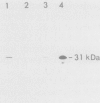Abstract
The phospholipase D (PLD) gene from Corynebacterium pseudotuberculosis has been cloned, sequenced, and expressed in Escherichia coli. Analysis of DNA sequence data reveals a major open reading frame encoding a 31.4-kilodalton protein, a size consistent with that estimated for the PLD protein by sodium dodecyl sulfate-polyacrylamide gel electrophoresis. Comparison of these data with the amino-terminal protein sequence indicates that the mature PLD protein is preceded by a 24-residue signal sequence. Expression of the PLD gene in E. coli is initiated from the corynebacterial promoter, and the resulting protein has sphingomyelinase activity. Primer extension mapping localized the 5' end of the PLD gene mRNA to a site 5 to 7 base pairs downstream of a region similar to the consensus sequence for E. coli promoters. Northern and Southern blot analyses suggest that the gene is transcribed from mRNA approximately 1.1 kilobases in length and that it is present in a single copy within the C. pseudotuberculosis genome.
Full text
PDF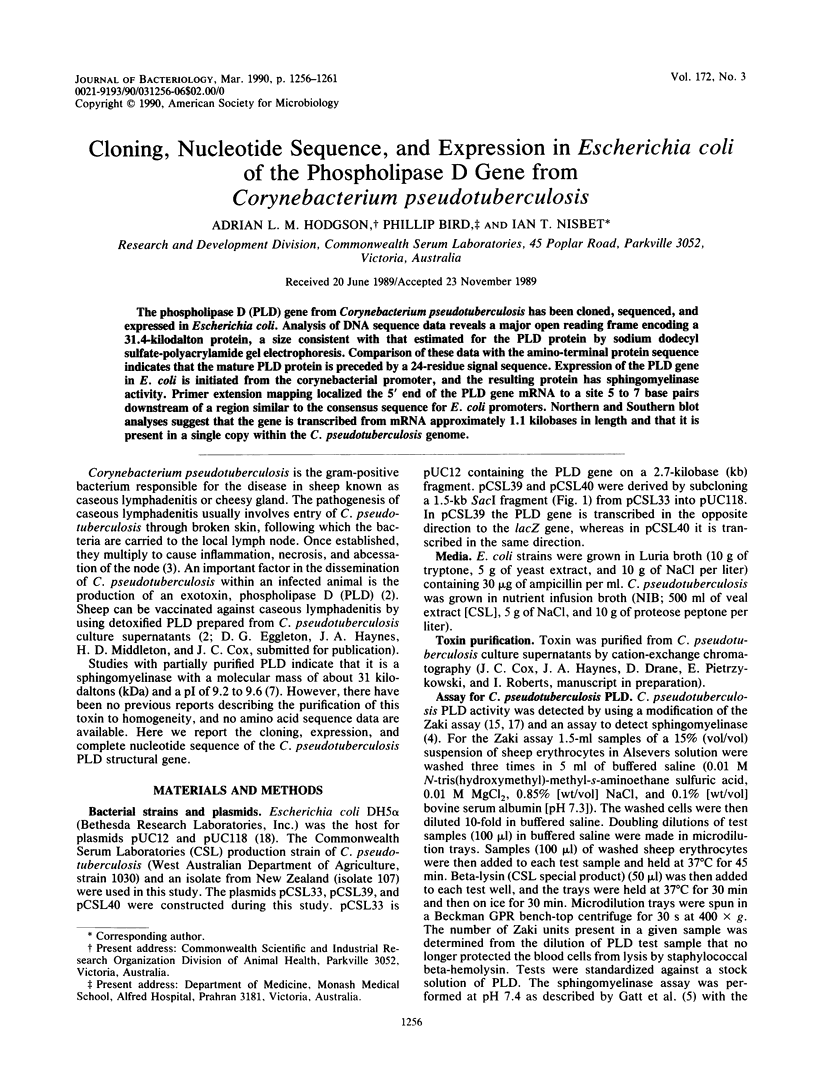
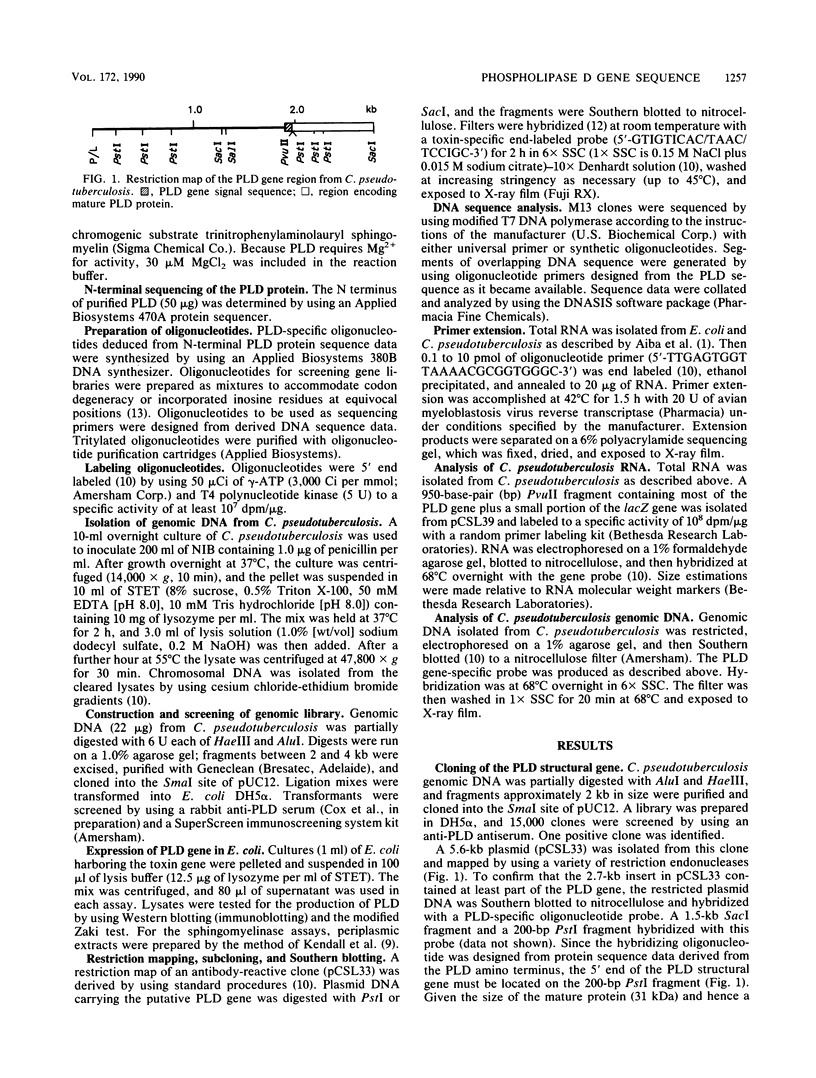
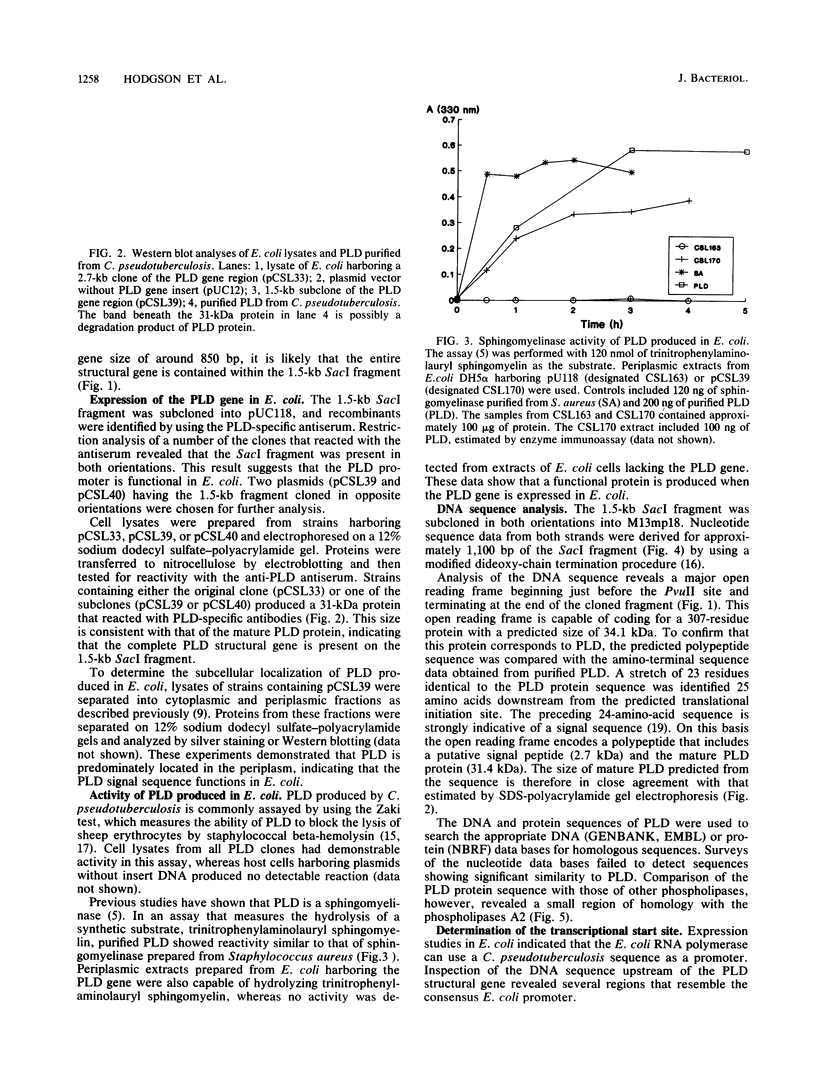
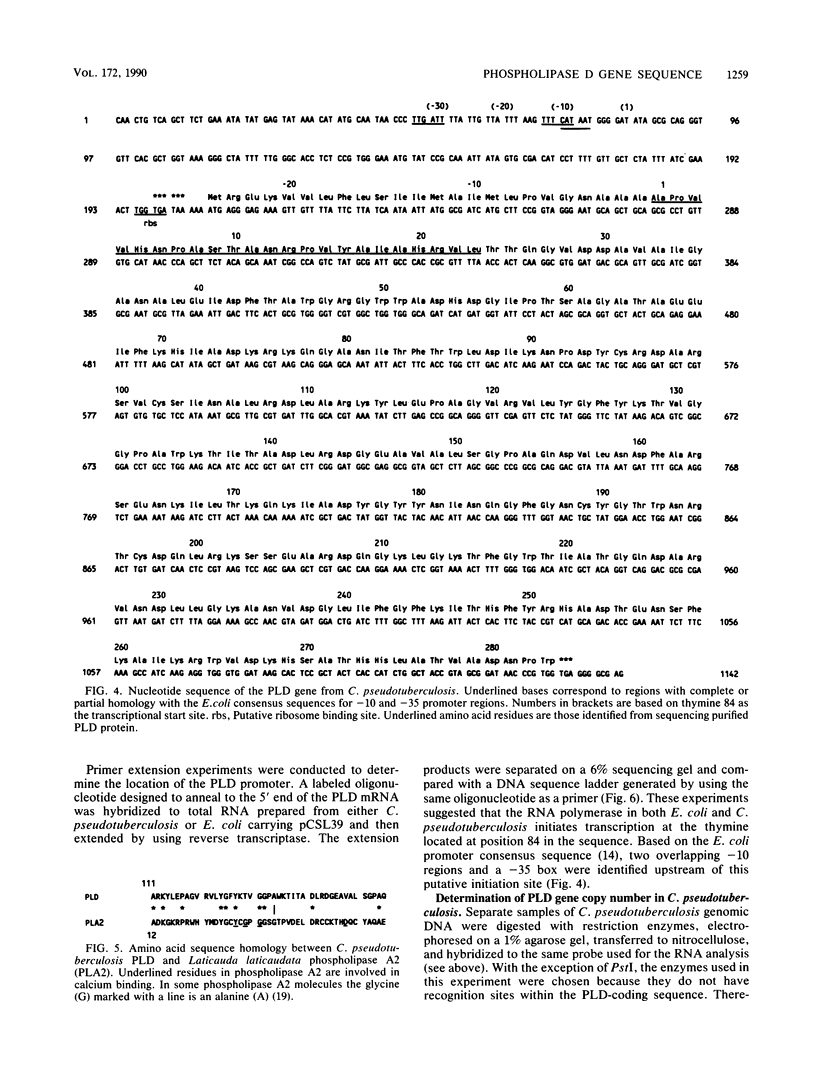
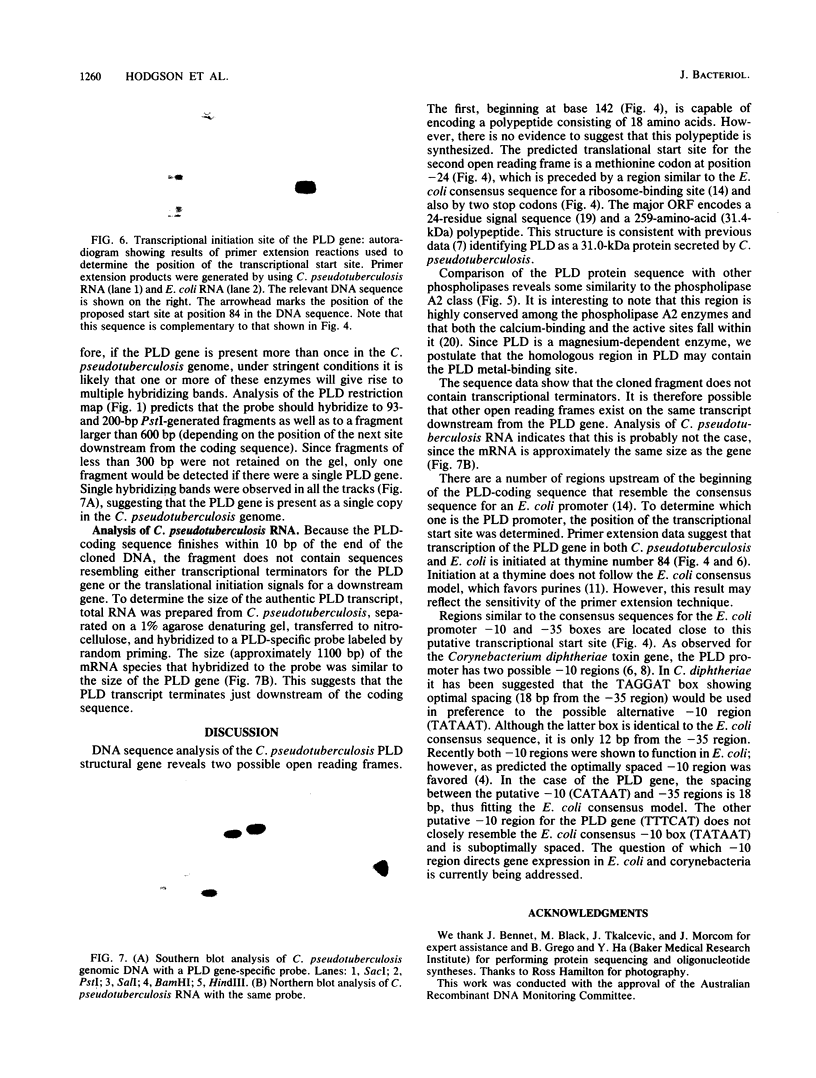
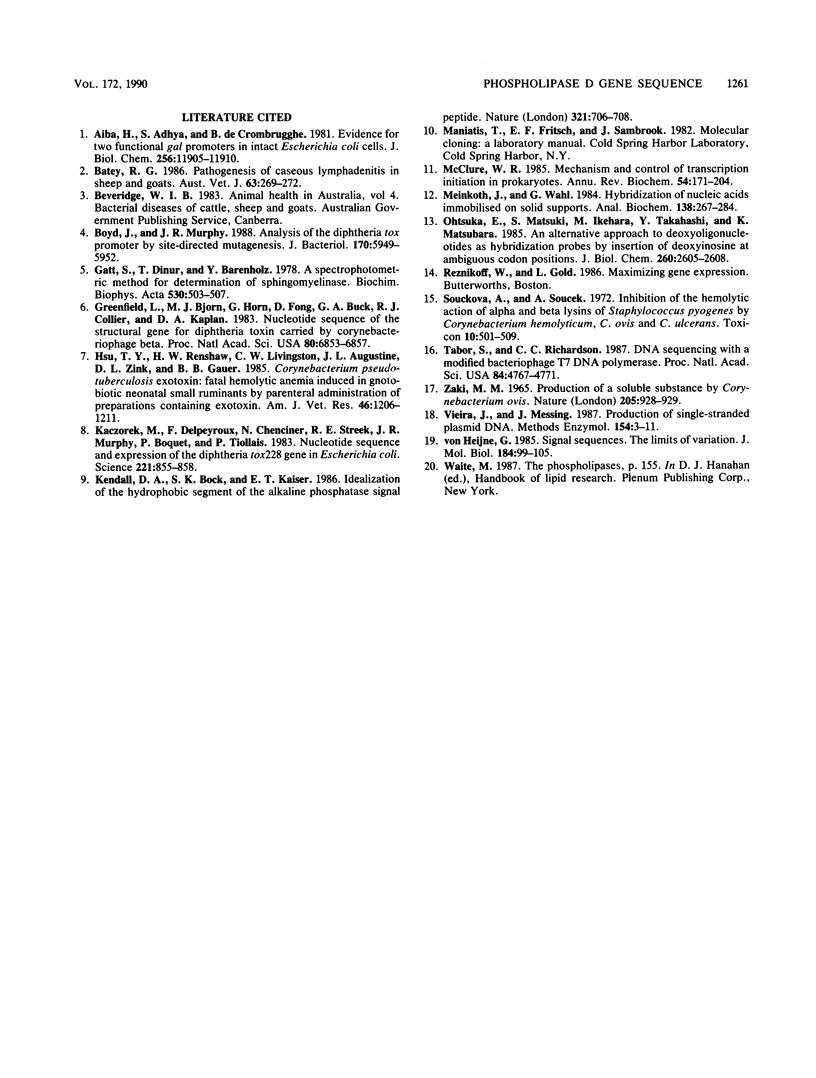
Images in this article
Selected References
These references are in PubMed. This may not be the complete list of references from this article.
- Aiba H., Adhya S., de Crombrugghe B. Evidence for two functional gal promoters in intact Escherichia coli cells. J Biol Chem. 1981 Nov 25;256(22):11905–11910. [PubMed] [Google Scholar]
- Batey R. G. Pathogenesis of caseous lymphadenitis in sheep and goats. Aust Vet J. 1986 Sep;63(9):269–272. doi: 10.1111/j.1751-0813.1986.tb08064.x. [DOI] [PubMed] [Google Scholar]
- Boyd J., Murphy J. R. Analysis of the diphtheria tox promoter by site-directed mutagenesis. J Bacteriol. 1988 Dec;170(12):5949–5952. doi: 10.1128/jb.170.12.5949-5952.1988. [DOI] [PMC free article] [PubMed] [Google Scholar]
- Gatt S., Dinur T., Barenholz Y. A spectrophotometric method for determination of sphingomyelinase. Biochim Biophys Acta. 1978 Sep 28;530(3):503–507. doi: 10.1016/0005-2760(78)90169-8. [DOI] [PubMed] [Google Scholar]
- Greenfield L., Bjorn M. J., Horn G., Fong D., Buck G. A., Collier R. J., Kaplan D. A. Nucleotide sequence of the structural gene for diphtheria toxin carried by corynebacteriophage beta. Proc Natl Acad Sci U S A. 1983 Nov;80(22):6853–6857. doi: 10.1073/pnas.80.22.6853. [DOI] [PMC free article] [PubMed] [Google Scholar]
- Hsu T. Y., Renshaw H. W., Livingston C. W., Jr, Augustine J. L., Zink D. L., Gauer B. B. Corynebacterium pseudotuberculosis exotoxin: fatal hemolytic anemia induced in gnotobiotic neonatal small ruminants by parenteral administration of preparations containing exotoxin. Am J Vet Res. 1985 May;46(5):1206–1211. [PubMed] [Google Scholar]
- Kaczorek M., Delpeyroux F., Chenciner N., Streeck R. E., Murphy J. R., Boquet P., Tiollais P. Nucleotide sequence and expression of the diphtheria tox228 gene in Escherichia coli. Science. 1983 Aug 26;221(4613):855–858. doi: 10.1126/science.6348945. [DOI] [PubMed] [Google Scholar]
- Kendall D. A., Bock S. C., Kaiser E. T. Idealization of the hydrophobic segment of the alkaline phosphatase signal peptide. Nature. 1986 Jun 12;321(6071):706–708. doi: 10.1038/321706a0. [DOI] [PubMed] [Google Scholar]
- McClure W. R. Mechanism and control of transcription initiation in prokaryotes. Annu Rev Biochem. 1985;54:171–204. doi: 10.1146/annurev.bi.54.070185.001131. [DOI] [PubMed] [Google Scholar]
- Meinkoth J., Wahl G. Hybridization of nucleic acids immobilized on solid supports. Anal Biochem. 1984 May 1;138(2):267–284. doi: 10.1016/0003-2697(84)90808-x. [DOI] [PubMed] [Google Scholar]
- Ohtsuka E., Matsuki S., Ikehara M., Takahashi Y., Matsubara K. An alternative approach to deoxyoligonucleotides as hybridization probes by insertion of deoxyinosine at ambiguous codon positions. J Biol Chem. 1985 Mar 10;260(5):2605–2608. [PubMed] [Google Scholar]
- Soucková A., Soucek A. Inhibition of the hemolytic action of and lysins of Staphylococcus pyogenes by Corynebacterium hemolyticum, C. ovis and C. ulcerans. Toxicon. 1972 Aug;10(5):501–509. doi: 10.1016/0041-0101(72)90176-6. [DOI] [PubMed] [Google Scholar]
- Tabor S., Richardson C. C. DNA sequence analysis with a modified bacteriophage T7 DNA polymerase. Proc Natl Acad Sci U S A. 1987 Jul;84(14):4767–4771. doi: 10.1073/pnas.84.14.4767. [DOI] [PMC free article] [PubMed] [Google Scholar]
- Vieira J., Messing J. Production of single-stranded plasmid DNA. Methods Enzymol. 1987;153:3–11. doi: 10.1016/0076-6879(87)53044-0. [DOI] [PubMed] [Google Scholar]
- ZAKI M. M. PRODUCTION OF A SOLUBLE SUBSTANCE BY CORYNEBACTERIUM OVIS. Nature. 1965 Feb 27;205:928–929. doi: 10.1038/205928a0. [DOI] [PubMed] [Google Scholar]
- von Heijne G. Signal sequences. The limits of variation. J Mol Biol. 1985 Jul 5;184(1):99–105. doi: 10.1016/0022-2836(85)90046-4. [DOI] [PubMed] [Google Scholar]



